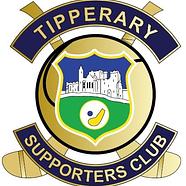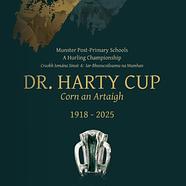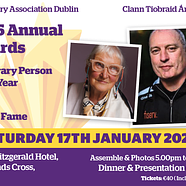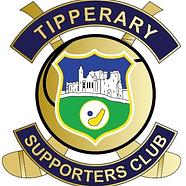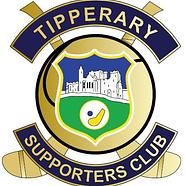
TIPPERARY GAA SCENESee attached latest news on Tipperary GAA scene from Jonathan Cullen, PROLink
‘The Life and Times of a Tipperary Hurling Supporter 1974-1986’I am sharing an extract from this week’s “Westside”, our very own master wordsmith, on the wonderful book by Tommy Treacy, taking us on a trip down memory lane. The lead-up to Christmas is a busy time for sports publications. Many target the lucrative Christmas market where the long winter nights encourage reading; a book can often be the ideal present for the sports-minded individual.This year is no different with many and varied offerings on the bookshelves. One publication of particular interest to Tipperary hurling followers is that from Tipperary-town native, Tommy Treacy, entitled ‘The Life and Times of a Tipperary Hurling Supporter 1974-1986’.The timeline will immediately surprise people. ’74 to ’86 were famine years, a dreary era of endless disappointment for Tipperary hurling. In a sense it’s an ignored period in our hurling story, referenced only as a reminder of what can happen when a slump hits. Corkonians will understand.And yet that’s one of the many merits of this book. It’s one of those roads less travelled. Nobody, to my knowledge, has focused on this period, which is seen as a lowlight in our proud history. We don’t celebrate failure.Yet the players who wore the jersey during this time deserve better. They, even more than the rest of us, suffered the yearly trauma of disappointment. For most they ended their careers with little to show for all the effort expended.Tommy Treacy has done them some service in recording their various attempts at breaking the cycle of defeats, including the luckless days when a ball-hop or a refereeing call might have made the difference in an era of merciless knock-out championship.For Tommy Treacy, though, it’s much more than just a chronical of games and scores. It’s a hurling memoir full of recollections and reflections. As a child of the sixties, he grew up experiencing the once-yearly trips to Cork or Limerick or elsewhere. Each time hope turned to heartache as the barren years stretched out.His late father, D.J., was a popular publican for many years at 30 Main Street, so Tommy’s childhood landscape was coloured by the hurling banter of the customers. Not surprisingly such repartee is everywhere in the book.An interesting section of the book is where Tommy interviews four players from the famine era, one from each division. Jack Dunlea (Silvermines) won an All-Ireland intermediate medal in 1971 and was a county senior from 1974 to 1978.Seamus Power (Boherlahan/Dualla) had a long involvement with county teams starting as a minor in 1970. He was a senior panellist in 1971 and thereafter had an on-off career until 1986. He was a team mate of Jack Dunlea in that All-Ireland intermediate win of 1971 and in many ways, he was unlucky in his career.During those famine years Tipperary had several near misses and 1976 is one that stands out. We played Cork at Limerick in the semi-final and in the dying moments with the rebels leading by a single point, a Seamus Power shot came back off the base of the post. Did goalie Martin Coleman get a touch on it?Cork went on to win the first of three-in-a-row All-Irelands and Tipperary were left with the horrible feeling of ‘what if’. ’79 was another agonising one. Cork led by a point at Pairc Ui Chaoimh into the final seconds when Pat O’Neill saw his shot for an equalising score drift narrowly wide.And can we ever forget ’84 with all its emotional baggage. This time it was Tipp in the lead before Seanie O’Leary’s late swoop on a ball brought down by goalie John Sheedy. Of all losses during the famine this was definitely the most painful. Once more the rebels went on to complete the job beating Offaly in the All-Ireland.Jim Kehoe (Kilsheelan/Kilcash) was the South player interviewed by Tommy Treacy. Once again, like Seamus Power, this was a player with an extensive inter-county involvement, starting as a minor footballer in 1969. He played both codes at minor, U21 and senior levels. His senior hurling tenure ended in 1982. Like all players of this era, it was an unrewarding time to wear the blue and gold.In interview Jim Kehoe reveals that he was never in a gym. The contrast with today’s players is quite stark. Back then training revolved around running laps and sprints and playing inhouse games and challenge matches. There was no gym work, no S & C, no nutritionist or sports psychologist; the world was a simpler place.The West player interviewed by Tommy was Pa Fitzell (Cashel K.C.). Once again, you’re dealing with a hurler who enjoyed a long career in the blue and gold, one which began as a minor in ’74 and ended (with the famine) as a senior in 1987. Like others he was unfortunate to miss out on the big breakthrough of ’89.Not surprisingly, Pa lists Cashel’s 1991 Dan Breen success as his career highlight. His biggest career disappointment was losing the 1978 All-Ireland U21 final in a replay to Galway. Being team captain made the regret all the more intense – as did the fact that he missed out on Tipperary’s three-in-a-row which followed that ’78 defeat.Tommy Treacy’s book is one that will resonate especially with all of us who travelled that same road as he did through the seventies and eighties. It was a period of crushing disappointment for Tipperary’s hurling followers.Yet it was also a period of great commitment by players who got little recognition for their efforts. Tommy Treacy has done a fine job in redressing that balance. It’s a worthy Christmas read.
CONDOLENCESOn behalf of the Tipperary Supporters Club we would like to extend our deepest sympathies to the Kinane family on the death of George.George was a great supporter of Tipperary hurling and an officer of the Supporters club for many years.Ar dheis Dé go raibh a anam.Link to RIP.ie is HERE
CLUBBER TV THIS WEEK
SPREAD THE WORDTo Join Tipperary Supporters Club Please click HEREThank you Michael CollinsPROTipperary Supporters Club


